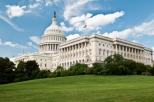Honing the new nuclear energy narrative
As a record number of nuclear leaders meet during the American Nuclear Society's 2010 Winter Conference in Las Vegas (of all places), the men and women of the U.S. nuclear community are all asking a version of the same question: What now? Clearly, the election results of November 2 will impact U.S. nuclear policy for the next two years, and probably reverberate much longer than that.
How will Sen. Harry Reid's (D., Nev.) reelection impact Yucca Mountain?
Will a GOP House seek cuts to the Department of Energy's nuclear energy R&D programs?
Will nuclear be one of the few traction points for bipartisan progress on U.S. energy policy or will it suffer neglect in a legislative environment shaped by inertia and gridlock?
It is too soon to tell, but political terrain has certainly shifted, and as members of the U.S. nuclear community, we must revamp our elevator speeches, our cocktail party conversations, and our PowerPoint presentations with a new narrative that fits the political times.
Previous narrative: Nuclear as a domestic clean energy option
 For the past two years, the existing nuclear policy narrative was predicated on Democratic control of Congress and the White House and the eventual passage of meaningful climate change legislation. While this narrative seemed generally favorable to nuclear's prospects, it did not yield big results. It went something like this: Despite the controversies over data inaccuracies, there remains a strong consensus that man-made carbon dioxide (CO2) emissions are making a tangible and potentially harmful contribution to global warming. As a result, the U.S. must enact legislation curbing U.S. emissions of CO2 and other greenhouse gases. This would require a wholesale reordering of our electric power sector, involving systemic adoption of energy efficiency measures-everything from smart grids and cogeneration to weatherization to solid state lighting, as well as a rapid expansion of renewable energy sources like wind, solar, geothermal, and biomass.
For the past two years, the existing nuclear policy narrative was predicated on Democratic control of Congress and the White House and the eventual passage of meaningful climate change legislation. While this narrative seemed generally favorable to nuclear's prospects, it did not yield big results. It went something like this: Despite the controversies over data inaccuracies, there remains a strong consensus that man-made carbon dioxide (CO2) emissions are making a tangible and potentially harmful contribution to global warming. As a result, the U.S. must enact legislation curbing U.S. emissions of CO2 and other greenhouse gases. This would require a wholesale reordering of our electric power sector, involving systemic adoption of energy efficiency measures-everything from smart grids and cogeneration to weatherization to solid state lighting, as well as a rapid expansion of renewable energy sources like wind, solar, geothermal, and biomass.
However, though efficiency and renewables are desirable (and worthy of lavish per/KWh subsidies) for their political popularity, they alone are not likely to achieve the expected level of CO2 reductions needed to meet proposed international targets without significantly raising energy costs and thus depressing U.S. economic growth and standards of living. Therefore, under any plausible scenario, the U.S. would need to significantly expand clean baseload energy generation capacity.
 While nuclear energy is the only truly proven baseload technology that can provide non-emitting electricity at scale today, clean coal with large-scale carbon sequestration is a promising concept, and, while not carbon free, natural gas generation appears to be an attractive lower-carbon option at low fuel prices.
While nuclear energy is the only truly proven baseload technology that can provide non-emitting electricity at scale today, clean coal with large-scale carbon sequestration is a promising concept, and, while not carbon free, natural gas generation appears to be an attractive lower-carbon option at low fuel prices.
The old narrative concluded that a combination of federal assistance and a market-based mechanism-i.e., cap-and-trade-was necessary to incentivize the development of clean energy broadly, while ultimately leaving it to the private sector to make technology specific choices. In short, the nuclear power narrative in the old environment could be defined in a phrase as domestic clean energy option-an important one to be sure, but an option nonetheless.
New policy narrative: Nuclear as a national security imperative
Of course, the mid-term elections have resulted in a changed political landscape in Washington as control of the U.S. House has shifted to a GOP House and the U.S. Senate is closely divided. Soon, more than 90 new U.S. House members will be sworn in as the 112th Congress convenes. Many of them have run on a platform of fiscal responsibility and have committed to seeking deep cuts in domestic discretionary spending.
It is critically important up front that these new members see nuclear not just as a domestic clean energy option, but also a national security imperative.
The nuclear-as-national-security-imperative cocktail party speech goes something like this:
 The world is embarking on a nuclear expansion with all the opportunities and risks associated with it. While the U.S. general public tends to hear about the nuclear escapades of countries like Iran and North Korea, most nations interested in nuclear energy are motivated by a sincere desire to improve standards of living for their inhabitants. And, in general, a world with plentiful clean energy will be more peaceful, more prosperous, and more environmentally sustainable over time.
The world is embarking on a nuclear expansion with all the opportunities and risks associated with it. While the U.S. general public tends to hear about the nuclear escapades of countries like Iran and North Korea, most nations interested in nuclear energy are motivated by a sincere desire to improve standards of living for their inhabitants. And, in general, a world with plentiful clean energy will be more peaceful, more prosperous, and more environmentally sustainable over time.
Currently, approximately 50 power reactors are being constructed in 14 countries, notably China, South Korea and Russia. The International Atomic Energy Agency now anticipates that at least 73 GWe in new nuclear capacity will be added by 2020, and 511 GWe to 807 GWe will be in place in 2030, effectively doubling the global nuclear generation capacity. What's more, many of these plants will be built in historically non-nuclear countries like the United Arab Emirates (UAE), Vietnam, and Jordan. In total, some 65 nations have expressed interest in adding new nuclear generation capacity.
The U.S. cannot stop the global nuclear renaissance. The Nuclear Non-Proliferation Treaty (NPT) guarantees that all signing nations have the right to enjoy the peaceful benefits of nuclear energy technology. Other countries are clearly determined to tap the increasingly internationalized nuclear marketplace to expand nuclear generation capabilities with or without U.S. participation. Unlike 40 years ago, today the U.S. only controls whether there will be a renaissance in the U.S.-not the rest of the world.
![]()
Nonetheless, there is a strong national security and nonproliferation case for the U.S. to play a role in the global renaissance. Whereas nuclear weapons were a concern throughout the cold war as a means to wage or deter war between NPT countries, the concern today is whether terrorists or rogue nations can obtain nuclear weapons and jeopardize regional stabilities. While this is one of the most critical diplomacy challenges of our time, it is only tangentially related to civilian nuclear energy. Countries like Iran use the rights granted to them as a signatory of the NPT to pursue proliferation-sensitive technologies like uranium enrichment, even though their underlying economic justification for them is shaky at best.
Less U.S. participation in international civilian nuclear markets will not contain the nuclear ambitions of Iran or North Korea. In fact, the U.S. has a successful history of managing nuclear nonproliferation through the so-called Section 123 Agreements that allow for the export of U.S. civilian nuclear technology. Look no further than the recent 123 agreements with India and the UAE. The U.S. isolated India for 34 years after their first atomic weapon tests in 1974, and then saw post-cold war relations deteriorate again after India's tests in 1998. Since the October 8, 2008, approval of the civil nuclear agreement, relations between the two nations are at an unprecedented level. The 123 agreement between the U.S. and the UAE effectively removed the entire fuel cycle from their nuclear energy future, serving as a model for other countries to forgo their own enrichment and reprocessing aspirations.
 Nuclear diplomacy is different with each country, but India and the UAE serve as two examples. If a country already has or is pursuing nuclear weapons, the U.S. can engage and entice them to give up the weapons program in exchange for civil nuclear support. If a country does not have a weapons or a civil program, we can entice them to pursue the civil option only. Certain countries that might be viewed as "lost causes" (Iran, North Korea, and Pakistan) should serve as examples of what happens when the U.S. is not engaged diplomatically from the beginning.
Nuclear diplomacy is different with each country, but India and the UAE serve as two examples. If a country already has or is pursuing nuclear weapons, the U.S. can engage and entice them to give up the weapons program in exchange for civil nuclear support. If a country does not have a weapons or a civil program, we can entice them to pursue the civil option only. Certain countries that might be viewed as "lost causes" (Iran, North Korea, and Pakistan) should serve as examples of what happens when the U.S. is not engaged diplomatically from the beginning.
Particularly now, with the potential for the global renaissance to spread throughout the Middle East, Africa, and further throughout Southeast Asia, the U.S. must be positioned to play a role in the nuclear activities in these countries. Our diplomatic capabilities are directly proportional to the strength of the U.S. nuclear technology portfolio. In short, if we have nothing desirable to sell, partner nations have no incentive to agree to forgoing proliferation sensitive technologies like enrichment and reprocessing.
Fundamental choice facing Congress
It is important for the new Congress to understand that we face a fundamental choice. We can either commit the nation to facilitating the global renaissance as a major supplier of safer, more proliferation-resistant nuclear technology, or we can attempt to extend our leadership in the regulatory and traditional nonproliferation spheres, while letting other nations fill the growing global demand for systems and components (and reap the benefits to job creation and national prestige).
 Craig Piercy serves as the Washington Representative for the American Nuclear Society and chair of the ANS Special Committee on American Nuclear Engagement.
Craig Piercy serves as the Washington Representative for the American Nuclear Society and chair of the ANS Special Committee on American Nuclear Engagement.
Corey McDaniel is a former energy and environment policy advisor to three U.S. Senators and holds B.S. and M.S. degrees in nuclear engineering and a PhD in environmental science and public policy. He currently resides in Mumbai, India where he advises U.S. nuclear companies on entering the Indian market, and where he is chartering an ANS local section in India.
advisor to three U.S. Senators and holds B.S. and M.S. degrees in nuclear engineering and a PhD in environmental science and public policy. He currently resides in Mumbai, India where he advises U.S. nuclear companies on entering the Indian market, and where he is chartering an ANS local section in India.

